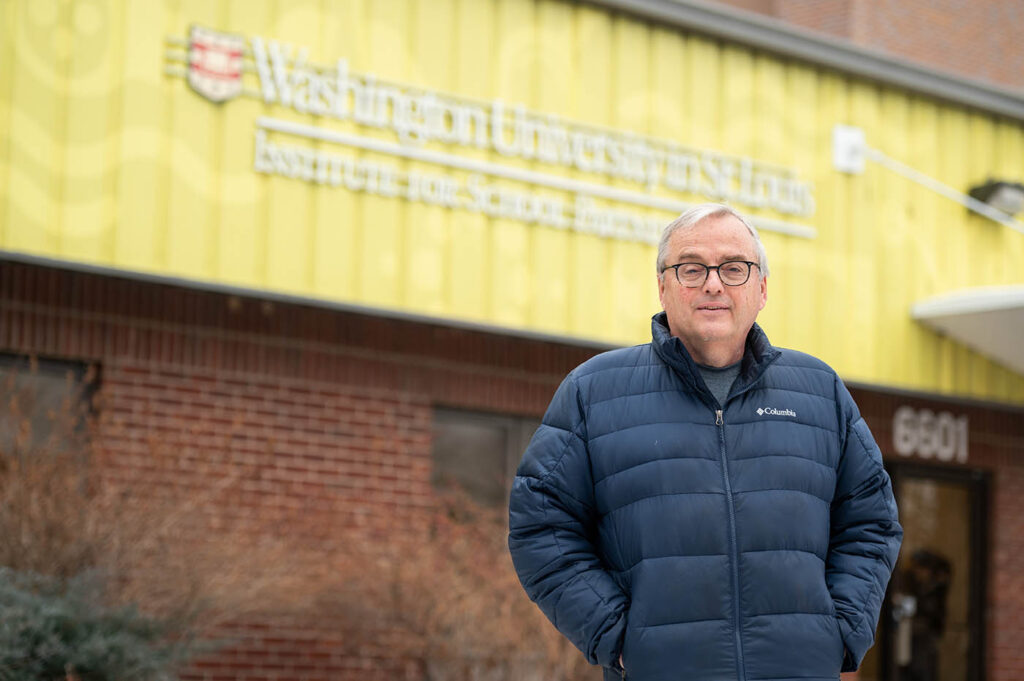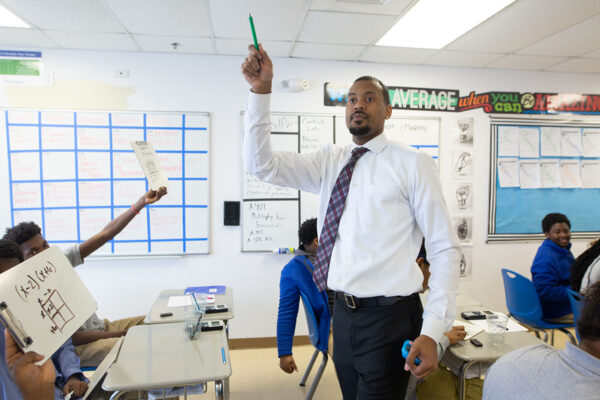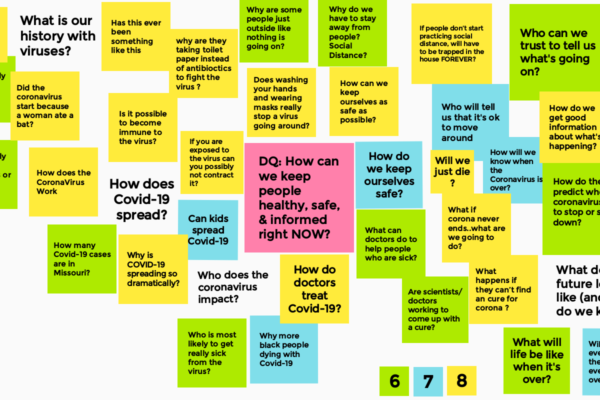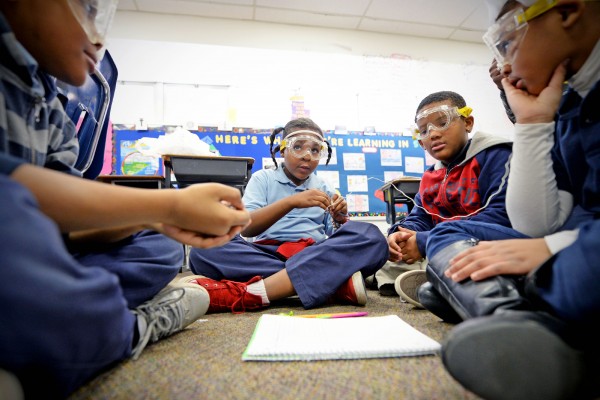To tour the warehouse, hover over the image. (Photos: Danny Reise/Washington University)
Not far from the crates of kazoos, stacks of Slinkies and boxes of nylon knee highs, Chris Cella, Institute for School Partnership warehouse manager, finds the owl pellets — regurgitated clumps of mouse fur, vole bones and sparrow feathers.
Cella packs the wrapped pellets into big, red boxes along with tweezers, petri dishes, paper plates, magnifying glasses, gloves, books, posters and other supplies for the mySci unit “Adapting to Change: How do living things get what they need to survive?” Cella’s team will then deliver the boxes to schools across the region, where third-graders will dissect the pellets as part of their study of ecosystems.
“This is a lot different from the way I learned science,” Cella said. “Finding a mouse skull is so much cooler and more interesting than reading your basic science book.”

MySci is a hands-on, inquiry-based science curriculum and professional development initiative created by the Institute for School Partnership at Washington University in St. Louis along with local elementary and middle school teachers. Students learn science by doing — blowing on kazoos to understand sound waves; playing with Slinkies to demonstrate energy transfer; stretching out knee highs to replicate the digestive system.
All of those materials and many, many more are stored at the 15,000-square-foot mySci Resource Center warehouse, located just north of the Delmar Loop. In 2020, the mySci crew packed and delivered 17,000 mySci kits to 240 schools serving 130,000 students — an increase of 30,000 students from 2019. Districts report that mySci students boost science understanding and test scores.
“It takes a Jenga master to fit all of those boxes in the warehouse,” said Keith May, ISP operations manager. “But we’re happy to do it if it means we’re reaching more students.”
Learn more about how Washington University supports K-12 education at The Pipeline.


